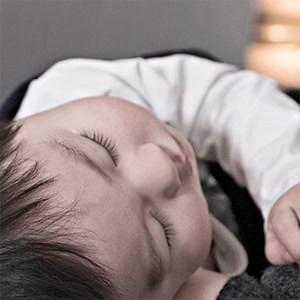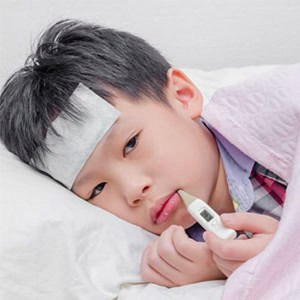Photocredit : YouTube
In simple terms, a febrile seizure or convulsion is a seizure caused by fever. It occurs when there is a sudden rise in body temperature, usually a fever above 38⁰C. This can be due to a viral or bacterial infection in the body. Febrile seizures usually occur on the first or second day of fever and affects children aged 6 months to 6 years of age. Studies in Western Europe quote a figure of 3 to 4% of children, less than 5 years old, experiencing febrile seizures.
How does a febrile seizure present itself?
The child will usually lose consciousness and does not respond to calls. His eyes might roll backwards and he might look blue or red in the face. He might have stiffening or jerky movements of his limbs. Some children might wet themselves during a seizure episode. Seizures usually last for less than 5 minutes and abort spontaneously. After a seizure, the child will usually feel sleepy for some time.

Photo credit: snotty-noses.com
What should I do when my child is having a febrile seizure?
First, don’t panic! It is indeed a horrifying experience for parents to witness their child having a seizure but parents must remain calm.
Note the time the seizure starts and put the child in recovery position – lying by his/her side with head slightly tilted to the back. This is to prevent the child from swallowing or aspirating his vomitus and to maintain the airway.
It is important not to put anything in the child’s mouth, including parents own fingers. The child will not choke or swallow their tongue. If the seizure lasts more than 5 minutes, or if another seizure occurs shortly after the 1st episode, the child should be brought to the nearest hospital.
How do we treat febrile convulsion?
Most of the time, febrile convulsions last less than 5 minutes and does not require any treatment. However, in the rare occasion that seizure lasts more than 5 minutes, doctors might give medication to stop the seizure.
All children having had seizures should visit the doctor as soon as possible for a proper examination in order to get a proper diagnosis and rule out serious infections such as meningitis.

Photo credit: hello-sehat.com
Will my child develop febrile seizures again after experiencing the first episode? Will he develop epilepsy when he grows up?
Thirty percent of children who have had febrile seizures can develop a second episode of febrile seizures when they have another febrile illness. Risk factors for recurrence include family history of febrile seizures, onset aged less than 18 months, lower temperature or shorter duration of fever at onset of seizure.
The risk of developing epilepsy (seizures occurring in the absence of fever) is 2 to 7%, which is similar to the risk of epilepsy in normal children population.
Can I prevent my child from developing febrile seizures?
Febrile seizures usually occur on the first or second day of the seizure. Despite popular belief, giving regular antipyretics (fever medication such as paracetamol and ibuprofen) does not reduce the number of febrile seizures. Research also showed that medication such as oral diazepam or phenobarbitone does not prevent febrile seizures.
References:
- http://patient.info/health/febrile-seizure-febrile-convulsion
- http://patient.info/doctor/febrile-convulsions#ref-8
- https://www.ninds.nih.gov/Disorders/Patient-Caregiver-Education/Fact-Sheets/Febrile-Seizures-Fact-Sheet#3111_8
- http://www.nhs.uk/conditions/Febrile-convulsions/Pages/Introduction.aspx
- http://www.rch.org.au/kidsinfo/fact_sheets/febrile_convulsions/
- Paediatric Protocols for Malaysian Hospitals 3rd edition
Share:
Was this article helpful?
Share:
Was this article helpful?
Health Packages
Elevate your health with tailored health packages at Columbia Asia Hospital. Take charge of your health journey today.

